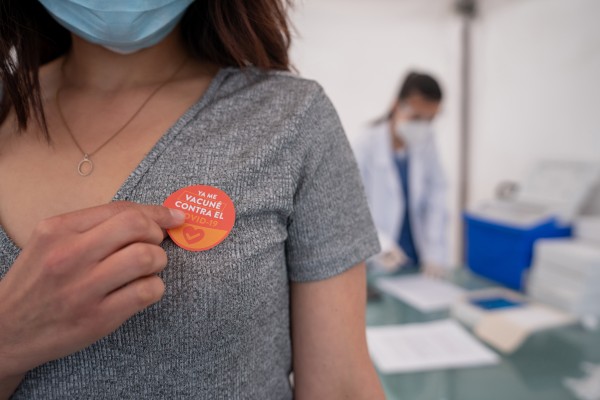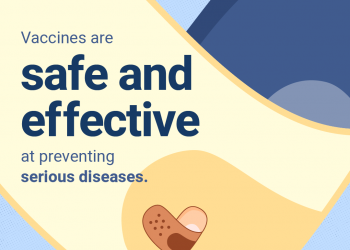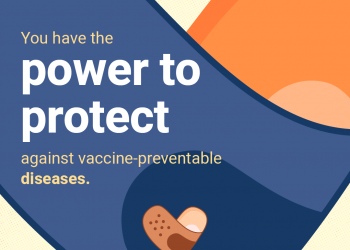Local health department (LHD) immunization programs have been working hard to ensure COVID-19 vaccines are available to all people in their communities. NACCHO spoke with two LHDs in Minnesota—Goodhue County Health and Human Services and Polk County Public Health— about how they have reached priority populations in their areas. Their strategies and approaches can help other LHDs do the same.
---
To date, the state of Minnesota has seen 630,512 cases of COVID-19. As with most states, they saw a peak in cases last winter. Luckily, their positive case rate has gone down tremendously, largely due to the successful distribution of COVID-19 vaccines. They have 3,254,019 people with at least one vaccine dose, 64.2% of those 16 and older. However, one of the challenges that many LHDs across the nation have experienced is reaching those who are vaccine-hesitant.
Both Polk and Goodhue Counties have communities that have been more hesitant to get the COVID-19 vaccine for various reasons. Some of the communities don’t speak English as their primary language and didn’t have access to educational materials in their preferred language. Misinformation has spread rapidly, and some people weren’t sure who to listen to for the facts about vaccines. There is also a lack of access in many communities with people working during pharmacy and LHD operating hours or individuals not having transportation to a vaccine provider. Goodhue and Polk Counties both worked with their communities to assess and find solutions to these and other challenges and increase the uptake of COVID-19 vaccines.
Goodhue County conducted an assessment with the Hispanic population to learn more about how COVID-19 was impacting them. They performed key informant interviews with members of the community and community partners to learn about any problems the community was facing and information on factors that impacted their vaccination decisions. They identified that some of the community’s hesitations included it being a new vaccine, that the vaccines hadn’t been tested enough, and concerns about side effects.
Polk County worked with community leaders and key partners to determine what barriers individuals were experiencing. They looked at the pockets of their community that historically have low rates of vaccination, such as those in poverty and the refugee, immigrant, and migrant communities in their area. They worked with community leaders to identify and address any needs that they had regarding COVID-19 vaccination. Polk also worked with the other healthcare providers and schools in the county to discuss the needs that they were seeing.
After completing both formal and informal assessments to understand the communities’ cultures and needs, both LHDs were better able to implement applicable programs and practices. Because they learned transportation and timing of vaccine clinics were a barrier for some, LHDs had mobile clinics in neighborhoods to increase access. They made vaccinations available at locations that the communities naturally gathered, such as the county fair. They were available to do educational sessions for businesses and service providers throughout the community; Polk County provided these sessions at multiple manufacturing plants.
Through their assessment, Goodhue learned that many in the community had a trusted relationship with a particular clinic. The LHD partnered with that clinic and redirected some of their vaccines to the clinic so people could get vaccinated in a location they felt safe. They also partnered with the clinic on messaging campaigns and the clinic posted Goodhue’s materials on social media.
Community members heard a lot of misinformation about the vaccines and potential side effects, so the LHDs worked to develop messaging to provide facts tailored to specific populations and their concerns. Goodhue learned that the Hispanic community was motivated by their care for others and was able to center their messaging about helping to protect family and friends from getting COVID. Both LHDs worked with their non-English speaking communities to get vaccine education materials translated so people could learn and understand in their own language. People were often more receptive to messages coming from members of their own community. LHDs worked with community leaders to create videos of the leaders talking about the importance of the vaccine, why they personally were getting the vaccine, and a walk-through of the process of getting vaccinated so people would know what to expect.
Through the community assessments, working with community leaders and partners, and implementing strategies, there were many lessons learned for Goodhue and Polk Counties that are also applicable to other LHDs.
- Listen to communities, their needs, and what they think would be helpful. Meet them where they are and tailor interventions to their needs.
- Involve community leaders in sharing messages, people are more receptive to information shared by someone they know and trust.
- Provide people with the information to be able to make an informed decision. Be available and willing to answer their questions and then give them time to make their decision.
- Start working on partnerships early, building relationships takes time. Provide them something they need before asking something of them.
- Partner with agencies that are trusted by your community.
- Collect data. Even if you can’t do a formal community assessment, a small amount of information can provide insight and give you actionable items.
One of the most important aspects of any immunization program is knowing the needs and values of the community you are trying to reach. Whether formal or informal, performing a community assessment helps to ensure you are on the right track. Working directly with the community leaders to implement any programs helps ensure community buy-in, increase vaccine confidence, and improve vaccine uptake.
--
NACCHO would like to thank Goodhue County Health and Human Services and Polk County Public Health for speaking with us, sharing their experiences, and the great work they are doing to reach their vaccine-hesitant populations.



